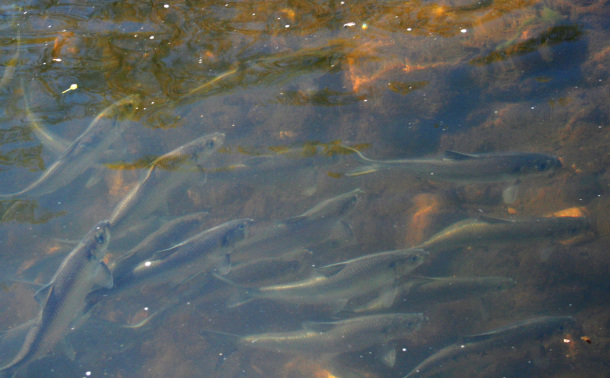Connecticut’s landscape contains nearly 5,500 dams, many of them small dams that once served a purpose but are no longer needed and are in bad shape. Removing them can reduce flood risk, help fish reach upstream spawning grounds, and generate jobs for skilled engineers.
Dam removal ties in nicely with two special celebrations this week: National Wildlife Week and National Flood Safety Awareness Week. And since in coming years climate change will only increase flood risk, proper dam removal and improved water flow are important to ensure public safety in the face of severe storms that can increase the risk of dam failure.
Removing outdated dams has myriad ecological benefits, as well. It restores access for fish, aiding species such as river herring that spend their lives in saltwater but return to freshwater to spawn. Other ecological benefits include restoring natural river flow and preventing toxic sediment buildup in our rivers.

During the 2013 legislative session, CFE championed a bill to make it easier to get dams on private property inspected. Previously, the state had only one full-time dam inspector—insufficient to ensure that thousands of dams around the state are sound. The lack of inspections is especially problematic because landowners are responsible for dam maintenance and upkeep, exposing them to serious liability if their dam should fail. With the new law, owners can hire professionals to inspect their dams. In Massachusetts, a similar policy has led not only to more frequent inspections (good for public safety!), but also to more owners choosing to remove their dams (good for the environment!).
In 2013, Save the Sound received federal coastal resiliency grants for two dam removal projects—one in New Haven and one in Mystic. As part of a Department of the Interior effort to reduce flood risk and restore fish access, these removal projects will help make the area hit by Superstorm Sandy more resilient to future storms. Gwen Macdonald, Save the Sound’s habitat restoration director, said, “these projects are of major ecological value because they will restore access to spawning ground for fish species that are foundational to Long Island Sound’s food web.”

Want to see for yourself what restoring fish passage can mean for a river? Come join us this spring on the Pequonnock River, where we recently installed a fishway to help river herring and other species get past a section of river where they’d been forced to flop upstream through too-shallow water, exposing them to predators and injury. We’re holding a planting event to celebrate the first season fish will be using the new passage to reach their spawning grounds upriver. We’ll be working with volunteers to help plant native shrubs and grasses to keep the river healthy for fish. If you’d like to support our efforts or volunteer, please check out our Facebook event—and invite your friends!
Rivers are the lifeblood of our nation. Restoring their natural flow benefits the myriad species that call them home and help protects people and property from the consequences of floods.
Posted by Sarah Ganong, Media Coordinator at CFE.

4 thoughts on “Dam removal benefits fish and people”
Comments are closed.